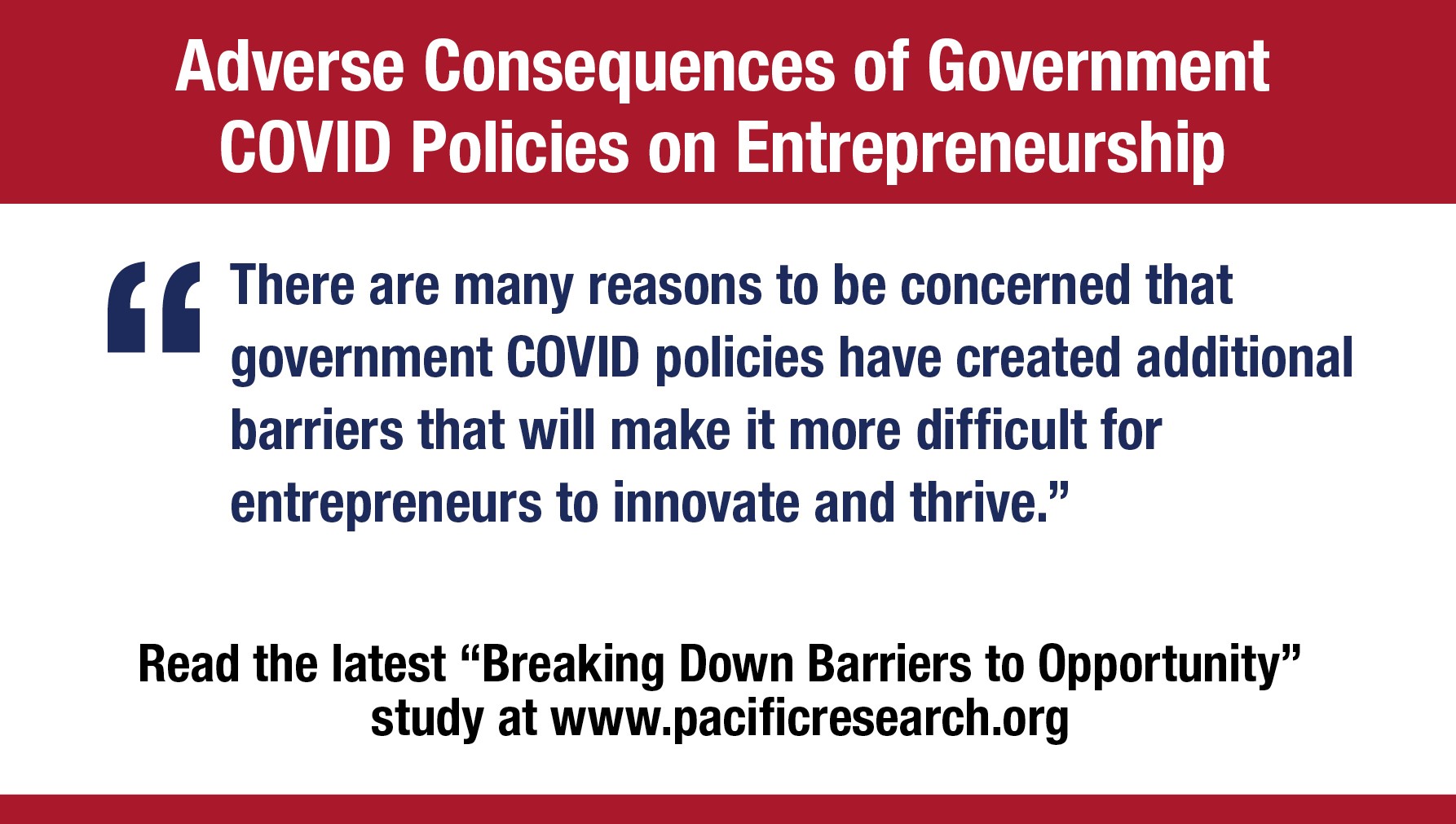By Sarah Downey | Nov 9, 2021
As Californians and families nationwide struggle with rising prices, concerns persist about the extent to which federal relief programs have increased barriers to economic opportunity and contributed to historic inflation.
“The federal government’s response to the pandemic’s economic consequences have been a failure,” Wayne Winegarden, senior fellow in business and economics at the Pacific Research Institute (PRI), said in an email response to the Northern California Record.
The Committee for a Responsible Federal Budget estimates Covid relief funding at almost $6 trillion.
“The federal government spent money recklessly and implemented erratic regulatory changes that harmed small businesses to a much larger extent than their larger competitors,” said Winegarden, author of PRI’s new study, Promoting Economic Recovery Through Entrepreneurship Not Government.
“The Federal Reserve made things worse by monetizing the spending, as well as inappropriately engaging in credit allocation and fiscal policy activities,” Winegarden said. “The result is a post-pandemic economy that has created more barriers, which will make it harder for small businesses and entrepreneurs to thrive.”
California though home to many entrepreneurial successes has also produced a negative regulatory environment, Winegarden said.
“California’s policies are hostile to entrepreneurship despite its long history of being the nation’s innovation incubator,” Winegarden said. “Whether it is the highest state income tax rate in the country (13.3%), AB 5, restrictive zoning regulations, or regulations that drive up the cost of energy, California’s policies make it more difficult for small businesses to start-up and thrive.”
But federal action with Covid economic relief has added roadblocks, Winegarden said.
“First there was the Federal Reserve’s policy of Quantitative Easing (QE),” Winegarden said. “Through these programs the Fed has monetized the debt (the Fed acquired 57% of the increased debt issued by the federal government) and fueled the growth in housing prices. Pricing families, particularly low-income families, out of their homes is problematic for many reasons. From an entrepreneurial perspective, home ownership is an important asset that helps many small businesses get started. Destabilizing this market will have direct negative impacts on entrepreneurship (by denying home ownership to some families) and indirect negative impacts (by creating more uncertainty that discourages entrepreneurial ventures).”
Winegarden said the trillions spent on the federal government’s pandemic response could be characterized as feckless.
“The federal government (under both Administrations) spent more in 18 months than its entire budget in 2019; the sheer size of that spending should give people pause,” Winegarden said.
“Even worse, although most of the spending was justified as a means to lessen the economic consequences from the pandemic-induced shutdowns and losses, that was not how the spending was used. Many programs, like the Paycheck Protection Program, were ineffective. Others, like student debt relief and sending out checks to all Americans, were not even targeted toward those who were economically harmed. The result is a huge increase in the national debt burden with little economic benefit to show for it.”
Among solutions recommended in the study:
- “Limit future spending growth until it reaches an affordable level of government spending, around 15 percent of the economy;
- Enact fundamental tax reform to simplify the current system and increase the incentive to work and become entrepreneurs; and
- Conduct a comprehensive regulatory review with the goal of simplifying the tax code and reducing the cost of compliance.”
The study, which is the fifth installment in PRI’s Breaking Down Barriers to Opportunity series, also looks at how at the pandemic economic response should impact people long-term.
“Taxpayers will now need to cover the large debt-burden costs for years into the future,” Winegarden said. “Allocating the burden to households with a positive tax liability, even at today’s low interest rates, the annual costs will be $753 per taxpaying household. These could explode to $1,600 or $3,700 per taxpaying household if interest rates were to increase to their average since 2009 and since 2000, respectively. These costs are a large additional burden that will significantly reduce people’s after-tax incomes.”
In the short-term, the trillions spent to counter the pandemic’s economic costs were ineffective, Winegarden said.
“Without changes, the policy environment’s pro-growth incentives have become worse,” Winegarden said. “The result will be less entrepreneurship, less innovation, and less income growth (particularly for lower-income households, which will worsen the income disparity problems).”

